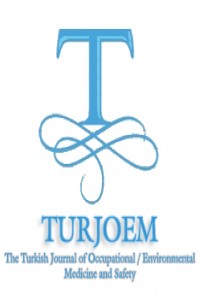Öz
Development of
the mass spectrometry (MS) techniques became an useful tool for the measuring
of analytes in clinical chemistry laboratories. It is obvious that there is an
increasing trend in the borderline cases due to early diagnostic techniques and
development of the health care systems require more sensitive, specific and
reliable techniques than routinly used methods. MS techniques provide higher
sensitivity and specifity. Because of having unequalled sensitivity, lower
detection limits and diversity of its applications MS has an outstanding
position among the analytical methods. MS laboratories become a part of
clinical chemistry laboratories during the last decade.
MSmain areasare
endocrinology, clinical and forensic toxicology, inborn error of metabolism,
therapeutic drug monitoring and emerging clinical biomarkers. Steroids
measurements are one of the main focus in MS laboratories in endocrinology
section. MS analysis recommended hormones are; estradiol in male, prepubertal
ages and postmenapausal term, free testosterone, aldosterone, 17-OH
progesterone, Deoksicorticosterone, 25-OH vitamin D2 ve D3, 25-OH vitamin
D3/3-epi-25-OH vitamin D3, 1,25-dihydroxy vitamin D3 ve 24,25 dihydroxy vitamin
D3. MS analysis is also found to be superior against immunassay in the
measurement of free tyroxine and tyriodotronine levels.
It has been also demonstrated that MS has several advantages to
immunassay in therapeutic drugs analysis. The chemical structures of
therapeutic drugs and their metabolites are quite similar to the parent drug,
therefore, it is difficult if not impossible to construct an immunoassay that
recognizes the parent compound without some degree of cross-reactivity towards
one or more of the metabolites. MS based assays have been developed for
immunosuppressants and are widely used in clinical practice.
MS has been used for clinical and forensic toxicology for two main
reasons. Immunoassays are platforms used as a screening test because they
provide faster results and tests are commercially available. Due to the
specificity limitations of immunoassays, MS is used to confirm false positive
results from the screening immunoassay systems. As such, these MS assays are
designed to find particular drugs or their metabolites. MS analysis is also
used for comprehensive drug screening.
For the use of inborn errors of metabolism, analyzing for amino, organic,
and fatty acids has undergone a series of developments to the technology.
Tandem MS is now recognized as one of the most definitive analysis procedures
for measuring these analytes. Tandem MSsystem is capable of measuring all of
the analytes within a group in a single run. So MS is called a “multiplex”
testing.
Development of the MS and chromatographic techniques have lead to great
success to quantification and characterisation of proteins. Because of MS, a
draft of human proteomics was published in Naturein 2014. The diagnosis of
infectious pathogens presents the range of application of MS and its growing
potential to contribute to clinical diagnostics.
Main advantages of MS can be classified as;
low solvent
volumes,
high throughput,
providing clinically stable results with deuterated internal standards,
minimizing the
specifity problems,
high analytical
range,
improved
sensitivity,
multiplex
testing in a single run,
cost-effective in long term (after 1-2 years after setup).
Main disadvantages of MS can be classified as;
requirement of
experience for method development and procedures,
time consuming
application, method validation progress,
long turnaround
times due to long preanalitycal steps,
difference in
calibrator and methods,
lack of
standardisation of solvents and stability issues.
The cost of
analysisis also of critical importance, which is closely related to the number
of samples analyzed. Development of analytical techniques is always expensive,
time-consuming and needs expertise. However MS enstruments are powerfull tools
and can be cost-effective after 1-2 years in clinical laboratories. The cost of
test is lower than other methods for high throughput experiments.
Anahtar Kelimeler
Kaynakça
- Ali ÜNLÜ Medical Biochemistry Department, Faculty of Medicine, Selçuk University, Konya, Turkey
Öz
Kaynakça
- Ali ÜNLÜ Medical Biochemistry Department, Faculty of Medicine, Selçuk University, Konya, Turkey
Ayrıntılar
| Bölüm | Articles |
|---|---|
| Yazarlar | |
| Yayımlanma Tarihi | 16 Şubat 2017 |
| Yayımlandığı Sayı | Yıl 2017 Cilt: Volume 2 Sayı: İssue 1 (1) - 2.İnternational Congress Of Forensic Toxicology |

